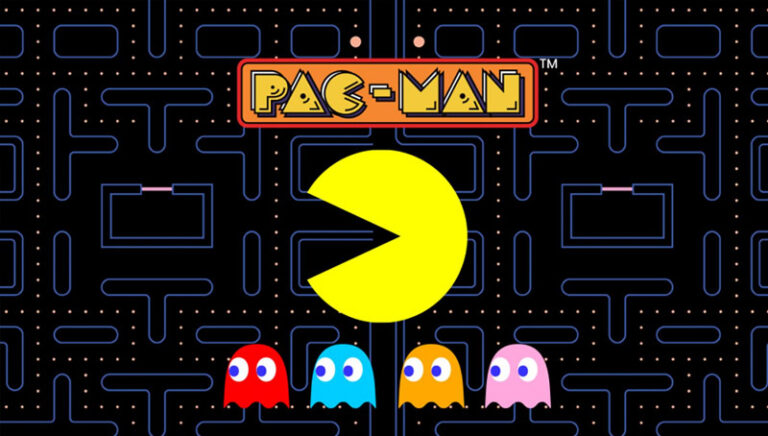Innovative Technologies in the Mobile Gaming Sector
In the realm of digital entertainment, mobile gaming stands as a testament to technological evolution and creative ingenuity. Far from its humble beginnings, the sector now showcases a tapestry of innovations that not only redefine the gaming experience but also signal new opportunities for developers, players, and the tech community at large. This article delves into the groundbreaking technologies reshaping the mobile gaming landscape, exploring their applications, impact, and the future they are ushering in.
The Advent of AR and VR in Mobile Gaming
Augmented Reality (AR) and Virtual Reality (VR) have transcended beyond buzzwords to become pivotal in elevating the mobile gaming experience. AR integrates digital elements into the real world, exemplified by games like Pokémon GO, which merged the virtual and physical realms to create a globally captivating experience. Conversely, VR immerses players in a completely digital world, offering an escape from reality.
Although VR’s adoption in mobile gaming is still nascent due to hardware constraints, advancements in phone processing power and portable VR headsets are steadily bridging this gap. These technologies are not just enhancing gameplay but are also fostering new forms of social interaction and storytelling within games, creating a more profound emotional connection with the digital world.
Cloud Gaming: Revolutionizing Game Access and Playability
Cloud gaming is dismantling traditional barriers in mobile gaming, such as storage and hardware limitations. By streaming games directly from servers, players can enjoy high-quality gaming without needing high-end phones. Services like Google Stadia and Microsoft’s xCloud are pioneering this space, offering extensive libraries of games previously limited to consoles or PCs. This technology democratizes gaming, making it accessible to a broader audience and setting a new standard for mobile game development.
Furthermore, cloud gaming’s scalability allows developers to update and improve games seamlessly, ensuring a constantly evolving gaming experience that keeps pace with technological advancements and user expectations.
Artificial Intelligence: Personalizing the Gaming Experience
Artificial Intelligence (AI) is another frontier radically transforming mobile gaming. AI algorithms can adapt game difficulty based on a player’s skill level, enhance NPC (Non-Player Character) behavior, and even create dynamic game environments.
This personalization extends to in-game advertising and content recommendations, tailoring experiences to individual preferences and behaviors, thus fostering a more engaging and satisfying gaming journey. Beyond gameplay, AI is instrumental in detecting and moderating online toxicity, ensuring a safer and more inclusive environment for players, thereby enhancing the social aspect of mobile gaming.
The Rise of 5G: Enabling Faster and Smoother Gameplay
The rollout of 5G technology is a game-changer for the mobile gaming sector. Its ultra-low latency and high-speed connectivity facilitate smoother, more responsive gaming experiences, particularly in multiplayer settings. This leap in connectivity not only enhances current gaming formats but also opens avenues for more complex, resource-intensive games that were previously unfeasible on mobile platforms.
With 5G, the potential for real-time global tournaments and deeply interactive social gaming experiences becomes a reality, paving the way for a more interconnected and vibrant gaming community.
Blockchain and NFTs: Introducing New Economic Models
Blockchain technology and Non-Fungible Tokens (NFTs) are introducing new economic models in mobile gaming. By tokenizing in-game assets, players can own, buy, sell, or trade their digital possessions securely, adding a layer of economic reality to the gaming experience.
Although this integration is in its infancy and not without controversy, it represents a significant shift in how game economies can operate, potentially leading to more sustainable and player-centric models. This new economy fosters a sense of ownership and investment among players, making the gaming experience more meaningful and potentially providing real-world economic benefits.
The Integration of Haptic Feedback
Haptic feedback technology is revolutionizing the tactile aspect of mobile gaming. By simulating touch or movements, games can offer a more immersive and interactive experience. This technology adds a new dimension to gaming, allowing players to feel vibrations or movements in response to in-game actions, thus bridging the gap between the digital and physical realms. The integration of haptic feedback not only enhances the realism of games but also aids in gameplay accessibility, providing tactile cues for players with hearing or visual impairments, thereby making games more inclusive.
Sustainable and Inclusive Gaming
Sustainability and inclusivity are becoming increasingly important in the mobile gaming sector. Developers are now more conscious of their environmental impact and are integrating eco-friendly practices in game design and operations.
Additionally, there is a growing emphasis on creating games that are accessible to all, including people with disabilities, ensuring a more inclusive gaming world. This shift towards inclusivity also involves culturally sensitive content, supporting a diverse range of languages, and designing games that cater to different age groups and skill levels, thus broadening the appeal and accessibility of mobile gaming.
Enhanced Graphics and Realism
The mobile gaming industry is witnessing a remarkable surge in graphical fidelity, bringing console-quality visuals to the palms of players’ hands. Advances in mobile GPU technology and rendering algorithms have enabled games to display intricate textures, complex lighting effects, and realistic physics. This leap in visual quality not only enhances the aesthetic appeal of games but also deeply immerses players in more lifelike and engaging worlds.
As smartphones continue to boast higher screen resolutions and more potent graphic capabilities, the line between mobile and console/PC gaming graphics continues to blur. This evolution is not just a technical achievement but also a canvas for artists and developers to craft visually stunning and emotionally resonant experiences.
In this realm, applications like the FanDuel Casino App leverage these advancements to deliver visually rich and immersive casino experiences, showcasing detailed environments and realistic animations that enhance the thrill of gaming.
Adaptive and Interactive Sound Design
Sound design in mobile gaming has evolved beyond mere background music and effects. Adaptive audio technologies now allow soundtracks and sound effects in games to react dynamically to player actions and in-game events. This interactive approach to sound design creates a more immersive and responsive gaming environment.
For instance, the intensity and tempo of music can change based on the game’s pace, heightening the emotional impact of each moment. Furthermore, spatial audio technology, leveraging headphones and mobile device speakers, provides a 3D sound experience, enhancing the perception of direction and distance, crucial for realistic and engaging gameplay. This auditory evolution significantly enriches the gaming experience, making it more immersive and sensory.
Social and Multiplayer Innovations
The integration of social media and multiplayer features in mobile games has transformed them into social platforms. Games now often include chat functions, community events, and collaborative or competitive multiplayer modes. This social aspect extends the appeal of games, making them spaces for interaction, teamwork, and competition. Technologies such as cross-platform play allow friends to play together regardless of the device, breaking down barriers between different gaming platforms.
Additionally, live streaming and game-sharing features are becoming commonplace, enabling players to broadcast their gameplay or share experiences with a global audience. These innovations not only enhance the fun and engagement of games but also foster a sense of community and connectivity among players worldwide.
Advanced User Interfaces and Controls
User interfaces (UI) and control mechanisms in mobile gaming are undergoing significant transformations. Developers are leveraging the unique features of mobile devices, such as touch screens, gyroscopes, and accelerometers, to create intuitive and innovative control schemes. This evolution allows for more complex and varied gameplay, moving beyond the traditional button and joystick controls.
Voice control and gesture recognition are also being integrated, providing players with new ways to interact with games. These advancements in UI and control mechanisms not only enhance gameplay but also make games more accessible to a wider range of players, including those who might find traditional control schemes challenging.
Integration with Wearable Technology
Mobile gaming is expanding its reach to wearable technology, such as smartwatches and AR glasses. These devices open new possibilities for gaming, offering unique gameplay experiences tethered to everyday life. Smartwatches can host simple games, perfect for quick, casual play sessions, and can also serve as companions or controllers for more complex smartphone games. They can track player activity and health data, integrating these into gameplay for a personalized experience.
AR glasses take this a step further by overlaying game elements onto the real world, offering an even more immersive form of augmented reality gaming. This integration with wearable tech not only adds convenience but also creates novel gaming experiences that blend seamlessly with players’ daily routines, making gaming an even more integral part of life. It transforms everyday surroundings into interactive gaming environments, enhancing the potential for pervasive and context-aware gaming experiences.
Conclusion
The mobile gaming sector is at a fascinating crossroads, buoyed by innovative technologies that are reshaping the way we perceive and interact with digital entertainment. From the immersive realms of AR and VR to the democratizing force of cloud gaming; from the personalized experiences offered by AI to the seamless connectivity of 5G; and from the economic potentials of blockchain to the tactile enhancements of haptic feedback – these advancements are not just redefining gaming but also setting new standards for engagement, accessibility, and creativity. As we embrace these innovations, the future of mobile gaming looks not just promising but exhilarating, paving the way for experiences beyond our current imagination.







